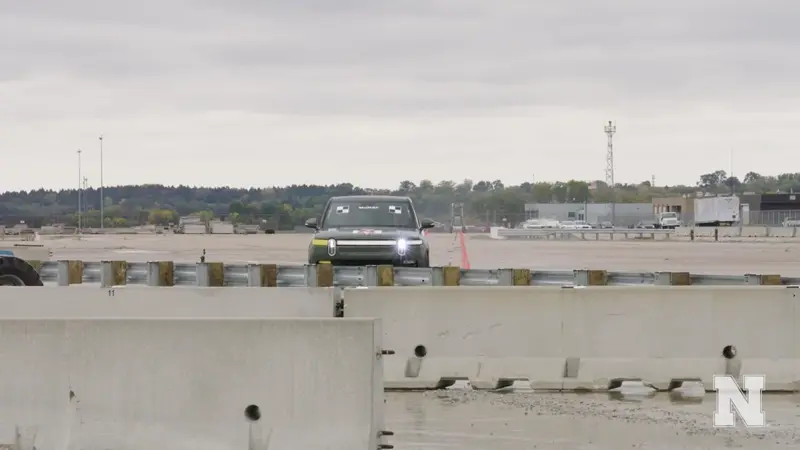More weight means more energy in crashes, and that’s a problem for the nation’s roadside barriers
6 hours ago
 –>
–> 
–>
Many concerns have been raised about the rising weight of modern vehicles in recent years. Initially, the issue began with the popularity and the increasing size of SUVs. Now, with heavy battery packs powering modern EVs, the situation has only worsened.
These vehicles have become so heavy that recent research indicates America’s guardrail systems might not be sturdy enough to withstand them. This could be a potential concern for both civilians and the military
Researchers from the University of Nebraska-Lincoln recently conducted a crash test involving a Rivian R1T pickup, which weighs approximately 7,000 lbs (3,175 kg). In the test, the truck was driven towards a guardrail at 60 mph (96 km/h). Shockingly, the researchers observed that the truck barely slowed down after crashing through the barrier.
advertisement scroll to continue
They add that the heaviest pickup trucks aren’t the only ones that are a cause for concern. In another test involving a Tesla Model 3 from 2018, the electric sedan lifted the guardrail and passed under it, and came to a rest on the other behind the barrier.

These tests underscore that the issue extends beyond just the weight of electric vehicles, which typically can weigh between 20 and 50 percent more than their gas-powered counterparts. It’s also important to consider their lower centers of gravity, which can lead to unexpected behaviors that guardrail designers may not have foreseen.
“There is some urgency to address this issue,” Cody Stolle, assistant director of the Midwest Roadside Safety Facility, said in a release published by the university. “As the percentage of EVs on the road increases, the proportion of run-off-road crashes involving EVs will increase, as well.”
Read: IIHS Forced To Check Its Crash Test Machinery To Ensure It Can Handle Heavy EVs
Each year, thousands of fatalities result from over 100,000 run-off road crashes that occur on American highways. Research indicates that since electric vehicles are involved in these types of accidents at similar rates and speeds as internal combustion vehicles, they could exert 20 to 50 percent more energy on roadside barriers.
The army is concerned too
And the safety concerns extend to more than just the occupants of the vehicles. The university’s research is being funded, in part, by the U.S. military, which believes that it is a matter of importance to national security. Its concern is that someone with ill intent could use an EV to crash through barriers surrounding sensitive locations.
“It is critical to conduct these EV baseline comparison tests to understand any potential risks to our nation,” said Genevieve Pezzola, a civil engineering researcher at the U.S. Army Engineer Research and Development Center. “This work is the first necessary step toward ensuring that our nation’s protection measures, such as roadside barrier systems and barriers to protect against hostile vehicles.”
While the solution for the military may be relatively simple (just make the barriers stronger), for highway designers it will take a little more careful consideration. A barrier that’s strong enough to catch a 7,000-pound EV must also be deformable enough not to destroy a 2,500-pound internal-combustion compact car. According to Stolle, that’s exactly why the university is conducting this testing.
“We need to know as much as we can now because it takes time to design new systems, evaluate them and confirm those results with full-scale crash testing,” Stolle said. “Then, state departments of transportation around the country can begin the process of upgrading roadside barriers to new versions with more robustness.”
[embedded content]
